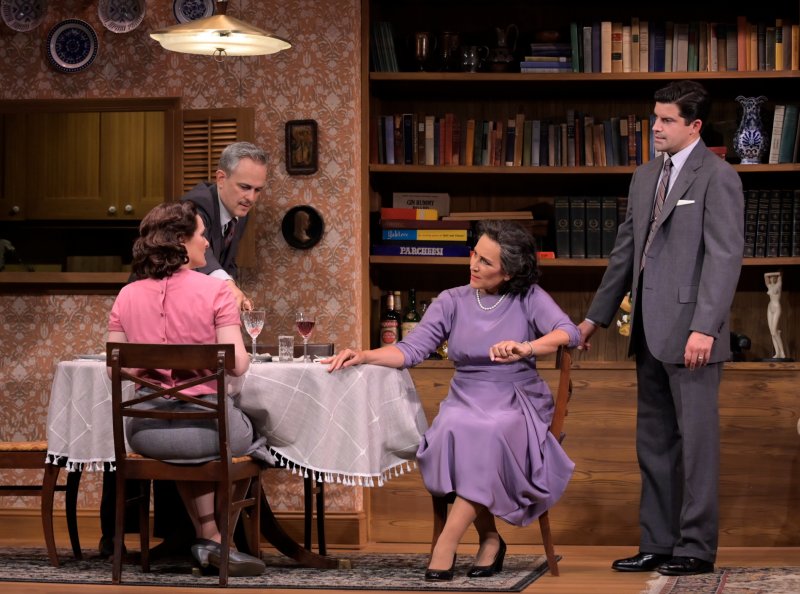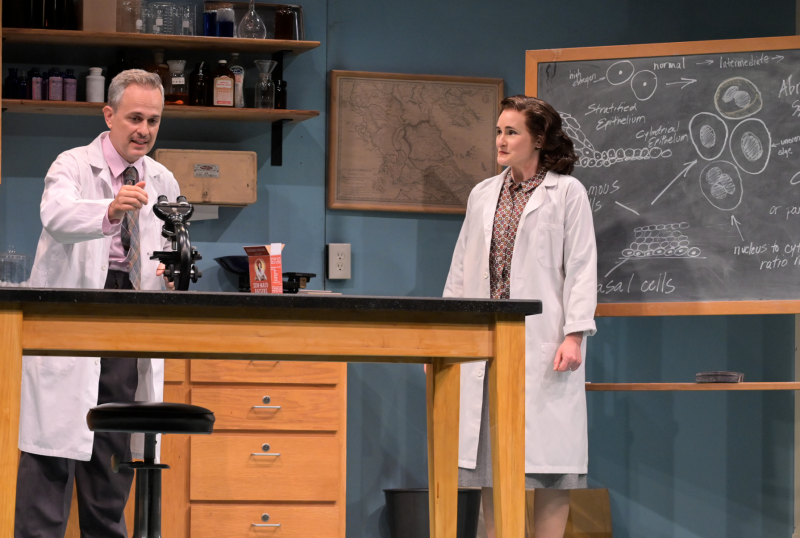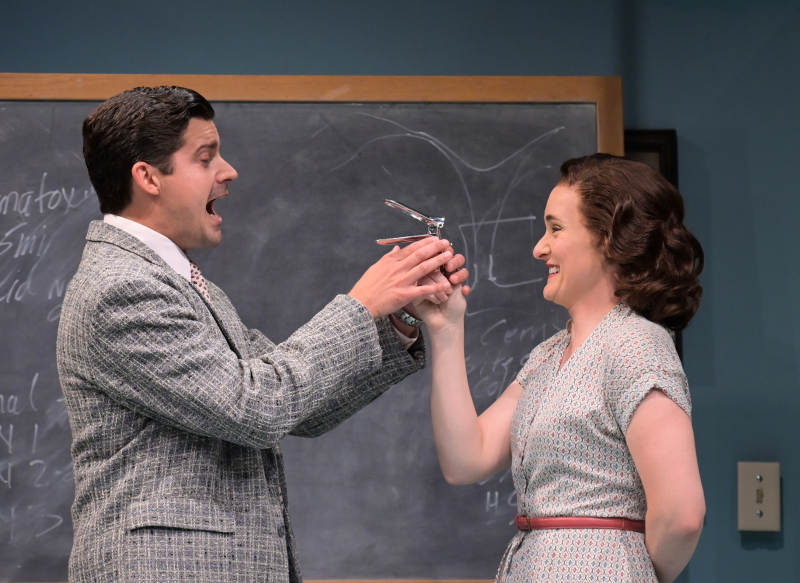There is no swift way to sum up the multitudes present in Nan and the Lower Body. The play, written by Jessica Dickey, directed by Giovanna Sardelli and presented onstage in Palo Alto by TheatreWorks Silicon Valley, is an exploration of everything it means to be a woman. It touches on the way women’s health has been traditionally neglected by the medical community. It ponders gender roles and the ways women have been sidelined by patriarchal culture. It even quietly highlights the stoicism women develop because of the pain—both physical and emotional—that is inherent to living in a female body.
The play, which is based on real-life events, revolves around four characters. On one side there’s Nan, a conscientious cytologist in training, and her loving husband Ted, a minister who considers himself progressive but still puts his goals before hers. On the other there’s the quirky Dr. Papanicolaou, who has just developed the life-saving Pap smear, and his wife Mache, a bold woman who loves music, ouzo and delivering zingers.

The four actors in these roles (Elissa Beth Stebbins, Jeffrey Brian Adams, Christopher Daftsios and Lisa Ramirez) have a sparkling chemistry that facilitates a surprising number of laugh-out-loud moments. That humor is key to getting Nan and the Lower Body‘s many salient points across. (An ongoing joke about the way the word “vagina” makes certain people squirm is a particular joy.)
There are a number of moments in Nan that shouldn’t work on the stage, but do: the pap smear that is performed on Nan towards the end of the play. The moment Mache angrily throws a box of slides (containing vaginal fluid) into the middle of an in-use dining table. The conversation between Dr. Papanicolaou and Ted about whether or not women are the superior sex. In the wrong hands, all would be awkward—even cringe-worthy. Instead, these scenes work because of sharp dialogue, the aforementioned cast chemistry and Sardelli’s masterful direction. It helps that the two sets—the lab where Dr. Papanicolaou and Nan work, and a multi-dimensional living room—are beautifully detailed and realistic.

The plot hinges on two things: whether or not Nan will sacrifice her rewarding work to put her husband’s needs first, and her desire to find out where her chronic physical pain comes from. Neither ends up being the point of the play. Rather, Nan and the Lower Body‘s greatest concerns are about how cis women’s lives are impacted by the bodies they’re born into.




